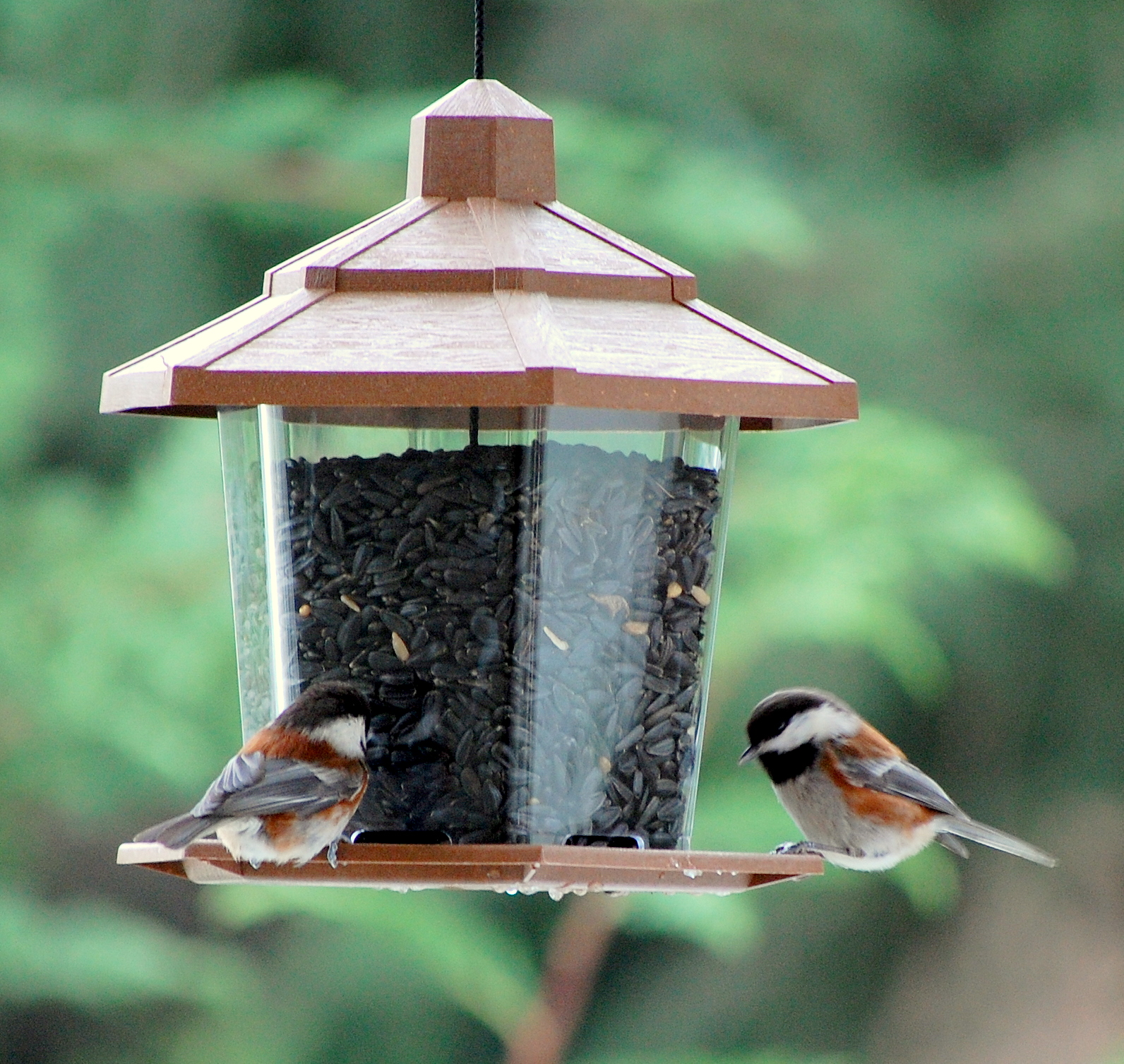Even in summer when there’s plenty of sustenance from plants and insects, birds welcome the variety of seeds and nuts offered in bird feeders.
When putting out a banquet of supplemental food, high quality is essential, said Dana Sanchez, a wildlife specialist for Oregon State University Extension Service. Mixes with red millet, golden millet, flax seed, rape seed and oats are a waste because birds will just kick those fillers out of the feeder, where they’ll fall on the ground and attract unwanted visitors like rats. They’ll also sprout and grow into undesirable plants.
Put black oil sunflower seeds top on the list because they attract so many different bird species, Sanchez said, including chickadees, black-headed grosbeaks, house sparrows, northern flickers and song sparrows. To enjoy finches, offer their favored nyjer seed, also called thistle seed, in specialized feeders with openings small enough to hold the seed in and perfect for their tiny beaks.
Many birds – waxwings, grosbeaks, chickadees and robins – love fruit, which can be put out on elevated platform feeders. But Sanchez warns that rotting fruit attracts wasps, so be prepared to replace the fruit for fresh often and use wasp traps.
Though people enjoy watching woodpeckers going at suet blocks, Sanchez said the fat-and-seed mixtures are best used in fall and winter when birds need the extra energy to keep warm.
“There are so many natural sources of food now, and in warm weather suet goes bad quickly, which is not good for birds,” she said. “So if you have to have it, check it often and remove it as soon as it starts to smell.”
Hummingbirds are a class unto themselves. These high-energy birds need a special diet high in sugar. To make your own, use a 4-to-1 ratio of water and sugar. Bring the mixture to a gentle boil for 1 minute. Let it cool and pour into feeder. Don’t use red coloring, Sanchez said, because it contains dye that could possibly be dangerous. Colored feeders will attract hummingbirds and once they find it, they’ll be back.
Cleaning all bird feeders once a week is essential. Moisture contributes to mold, which causes diseases transmitted on avian feet after perching on feeders. Discard any feed left in the feeder, scrub inside and out with a long-handled brush – available in different sizes and lengths at bird shops or online – and follow with a rinse of bleach solution at a ratio of 10 percent water to 1 percent bleach. Let it dry thoroughly before filling.
How you arrange feeders around the yard doesn’t seem to matter to birds. In patio gardens or apartments, gathering them together in groupings is usually the only option. A larger garden allows for more feeders and more areas for placement.
“You’ll notice no matter how many ports you have, there will be competitions,” Sanchez said. “It’s a matter of ‘Get off that perch; it’s mine.’ You’ll see a lot of movement around.”
Regardless of how many feeders you have and how you’ve arranged them around the yard, be sure to provide shrubs and trees for shelter from wind and predators.
“Birds at feeders are always on the lookout for danger,” Sanchez said. “There are times when you put feeders where humans can see them, but birds won’t use them if there’s not a shrub nearby. Having food somewhat close to cover is a key consideration.”
Bird need water, too. Serve it up in a shallow, flat-bottomed bowl with ½ to 1 inch of water. Place it in either sun or shade, clean it often and change the water daily or at least every other day.
To reduce the chance rats will visit your bird stations, keep seed off the ground, Sanchez said. If ground-feeding birds like doves, quail and juncos are a favorite, experiment with elevating a platform feeder a bit off the ground and keep the area under it cleaned up. It may or may not work. Rats might still be able to access the feeder and birds might not.
Squirrels drive some people crazy with their tenacious – and often successful — attempts to steal bird food. Others enjoy their antics and put out peanuts especially for them.
“I don’t mind them,” Sanchez said. “But some people find themselves in conflict with squirrels. A feeder is like an Eat at Joe’s sign, a good place to hang out. And while they’re there, they can do other activities like cache their food in the lawn or damage plants. Plus, these voracious little animals eat a lot of expensive food.”
To thwart them, Sanchez recommends using baffles, which are half-moons of plastic that go above a feeder. Though some people insist it doesn’t work, putting feeders on a pole hanger in the middle of the lawn can stop squirrels from reaching the food. There are also feeders surrounded with cages that will fall with the weight of a squirrel and cover the feeder’s holes, but stay in place for the more lightweight birds. Check bird shops or online for these specific feeders.
Most of all, if you’re going to attract birds to the garden, don’t spray chemicals or use pelletized weed and feed or moss killer.
“We really need to be thinking about what we’re putting on our gardens,” Sanchez said. “We need to be cautious.”

